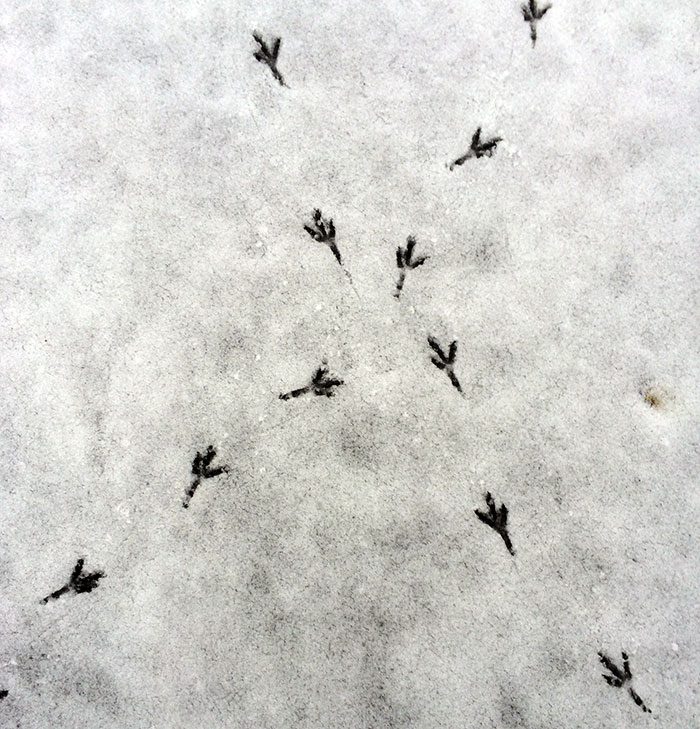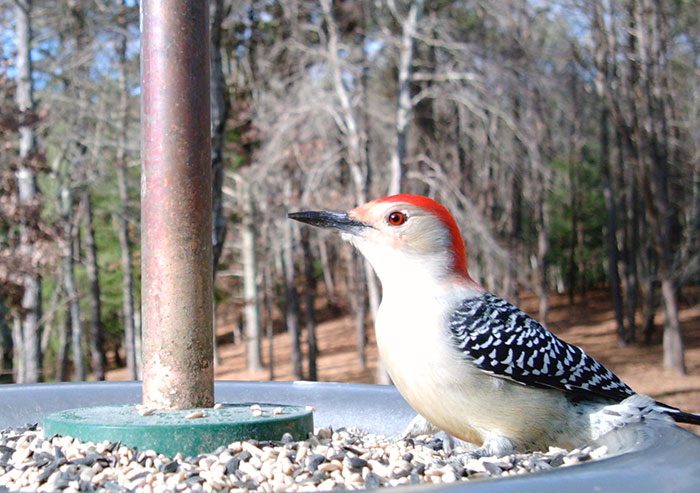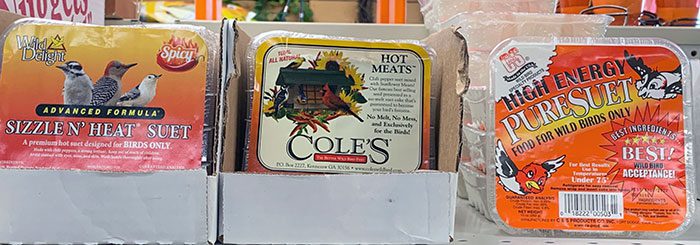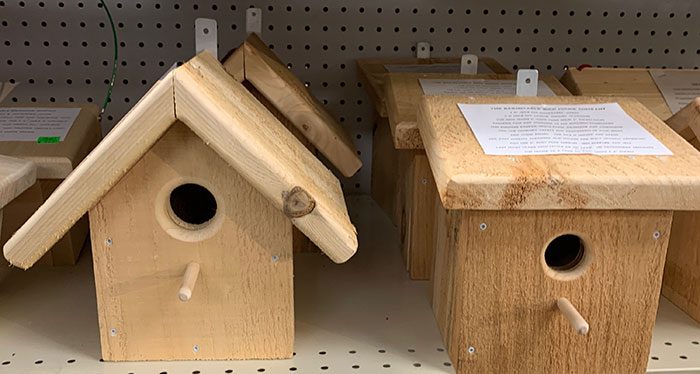Gearing Up To Help The Birds in Winter
Gearing Up To Help The Birds in Winter

Searching for Food, Drink & Shelter
Many people either dread winter or are not too thrilled about its arrival. We don’t look forward to brushing snow off our cars, walking carefully to avoid slipping on the ice, or having to pile on layers of clothing and don special footwear. But one thing we can anticipate with some pleasure is the sight of brilliantly colored feathers and the movement of birds in the bare landscape, or the sweetness of seeing their tracks in the snow.
Birds benefit from our help with their food, drink, and shelter. Because there aren’t many wild places on the Cape there are fewer dead trees to provide open cavities, not as many tangles of wild vines to hide in, and a smaller amount of wild sources of seeds, they need our aid. Here are some ways you can help.
- Seed: There are many choices when it comes to seed. If you don’t want to feed the grackles, starlings and blackbirds, put out safflower seeds. Woodpeckers, cardinals, titmice, chickadees and bluejays eat these seeds, but they are not a favorite from the bird feeder’s nemesis…the squirrels. There are mixes available for several species of birds as well. Many of our customers prefer the “premium blend” black sunflower seeds, that are mostly shelled but contain some still in the shell. All birds will eat this seed and because the majority of the seeds don’t have shells, there is less litter under the feeder

- Water: In November it’s time to set up a birdbath with a heater. These prevent the water from freezing so that even on the coldest days birds have something to drink. I’m always amused when I see a group of morning doves lined around my birdbath, treating it as if it’s their own personal spa. Like birdbaths in the summer, however, these need fresh water every day. Set up your heated bath in a place where you can dump out the dirty water without it landing where it will freeze on your pathways. If you don’t have such a location, you can make one out of a large plastic flower pot that is about a third filled with soil. Place this near the bath but on the opposite side where you stand to fill the feeder…this way you can tip it back into the pot which will catch and hold the water until it freezes.
- Suet: Birds appreciate a suet feeder because it’s a high energy food source that is easy for them to digest. Birds burn energy keeping warm in the winter, so a suet feeder is another way to help them survive the coldest months. You can buy suet that has seed mixed in with the fat, plain “High Energy” suet, and cakes that contain red pepper to deter squirrels and other critters.

Shelter: If you already have nesting boxes in place, know that birds often use them for shelter in the winter. You can mount new ones at this time of year for cold protection, and these will be used as nesting sites in the spring.

Your Landscape: In addition to providing food, water and shelter, the plants in your landscape can help birds as well. Leave as many native holly trees and Eastern red cedars as you can, because many birds eat their berries. Wait to prune that tangle of Clematis vines and the like, because these provide shelter and protection from predators. When you are planting new privacy borders, include a wide range of shrubs so that there are some evergreens, some fruit/seed-bearing plants such as Viburnums and Clethra. The larger the diversity of plants in your landscape, the better off the wildlife will be.
Subscribe To Our Newsletter
Sign up for our weekly email about sales and events.
